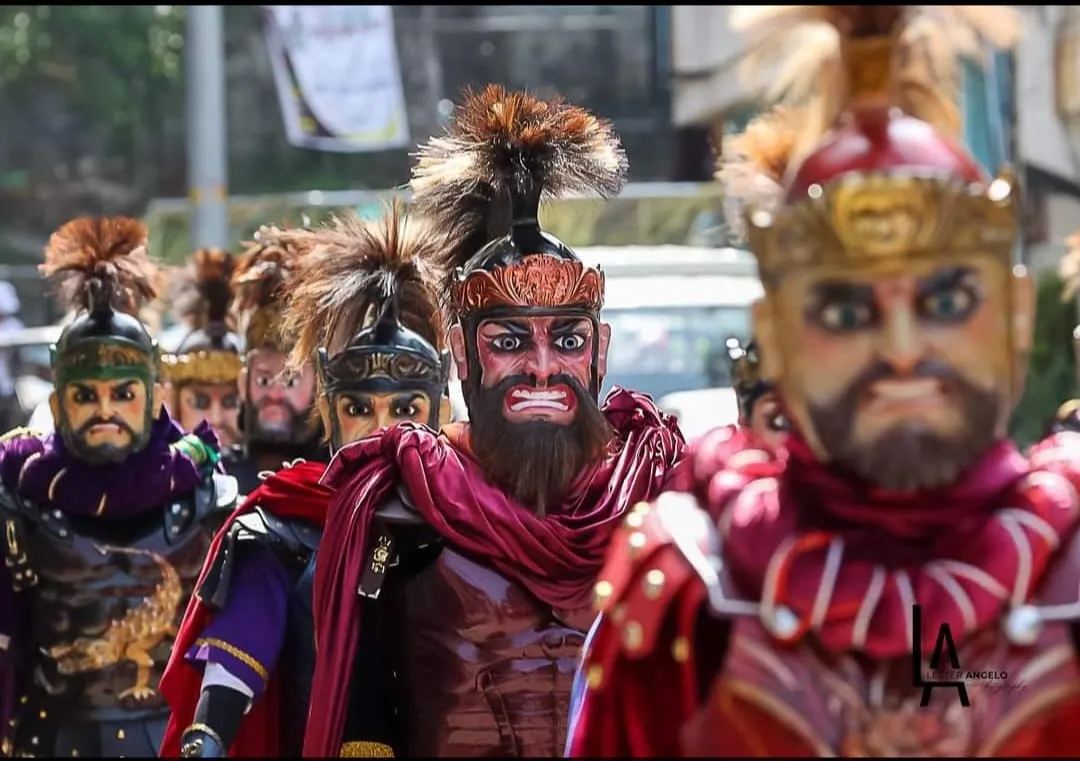
Introduction to the Moriones Festival
The Moriones Festival is one of the most unique and vibrant cultural and religious events in the Philippines, blending faith, tradition, and artistry into a week-long celebration that captivates both locals and tourists. Held annually during Holy Week, this iconic festival is centered in the island province of Marinduque, famously known as the “Heart of the Philippines.”
Imagine this: Roman centurions walking the streets of a tropical island, dressed in colorful, intricately designed costumes and masks. Sounds like something out of a movie, right? Well, that’s the Moriones Festival Marinduque, where history and faith collide to create a spectacle like no other. But wait—what is Moriones Festival exactly?
At its core, the festival is a reenactment of the story of Longinus, the half-blind Roman soldier who pierced Jesus’ side during the crucifixion and later converted to Christianity. Over time, this religious event evolved into a cultural extravaganza featuring parades, vibrant street performances, and heartfelt devotion, making it a must-see for anyone visiting the Philippines during Holy Week.
Table of Contents
What is the Moriones Festival?
The Moriones Festival is a one-of-a-kind celebration that blends history, religion, and Filipino artistry into a vibrant spectacle. If you’ve ever wondered what it’s like to witness Roman soldiers strolling around a tropical paradise, this is your chance! Known for its colorful masks, elaborate costumes, and deep cultural significance, the festival brings the streets of Marinduque to life every Holy Week.
A Closer Look: Moriones Festival Description
So, what makes the Moriones Festival so special? At its core, the festival reenacts the story of Longinus, a half-blind Roman soldier who played a pivotal role in the Passion of Christ. According to Christian tradition, Longinus was the soldier who pierced Jesus’ side with a spear during the crucifixion. The blood that flowed from Jesus miraculously healed his blindness, leading to his eventual conversion to Christianity.
But this isn’t just a simple story retold. The festival takes it up a notch with local participants—known as “Morions”—dressing up in Roman-inspired armor and masks to act out the tale. Think of it as a living, breathing history lesson… with a lot more drama and flair.
Moriones Festival History: From Humble Beginnings to a Cultural Icon
The Moriones Festival history dates back to the Spanish colonial period when Catholic missionaries introduced religious practices to the Philippines. Over time, this small religious observance grew into a major event that now draws crowds from all over the country—and even the world. It’s a testament to how Filipinos embrace faith and creativity, turning a solemn story into a full-blown celebration.
The name “Moriones” comes from the word “Morion,” which refers to the helmets worn by Roman soldiers. These intricate masks are handmade by locals, with each one being a work of art. They symbolize not just the Roman soldiers but also the rich craftsmanship and dedication of the Marinduqueños.
So, the next time someone asks, “What is Moriones Festival?” you’ll know it’s more than just masks and costumes. It’s a living tradition that celebrates faith, history, and artistry, all wrapped up in a cultural event that’s as meaningful as it is entertaining.
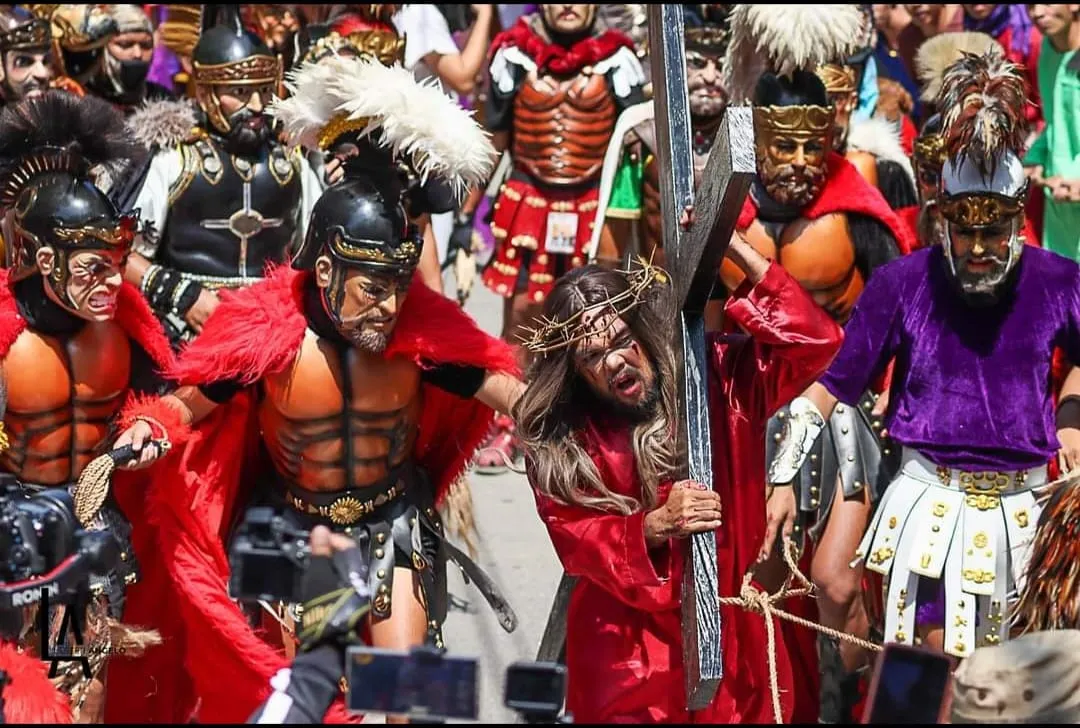
Moriones Festival Place of Origin
The Moriones Festival history is as rich and vibrant as the colorful masks and costumes that define it. Rooted deeply in faith and tradition, this celebrated event traces its origins to the beautiful island province of Marinduque, also known as the “Heart of the Philippines.” From a small religious observance to a cultural phenomenon, the festival has evolved into a cornerstone of Filipino heritage.
The Beginnings: Moriones Festival Place of Origin
The Moriones Festival place of origin is undoubtedly Marinduque, a picturesque island located in the central Philippines. Known for its serene beaches and warm-hearted people, Marinduque is also regarded as the “Lenten Capital of the Philippines.” But what exactly made Marinduque the birthplace of this iconic festival?
The roots of the Moriones Festival history can be traced back to the 1800s during the Spanish colonization of the Philippines. Catholic missionaries introduced the story of Longinus, a Roman centurion whose life changed forever after witnessing the crucifixion of Jesus Christ. Inspired by the tale, the locals of Marinduque began reenacting Longinus’ journey as part of their Holy Week observances. Over time, these small-scale reenactments grew into the grand festival we see today.
So, the next time you think of the Moriones Festival, remember that its roots run deep in the history and culture of Marinduque. What started as a small act of faith has blossomed into a national treasure, showcasing the resilience, creativity, and devotion of the Filipino people.
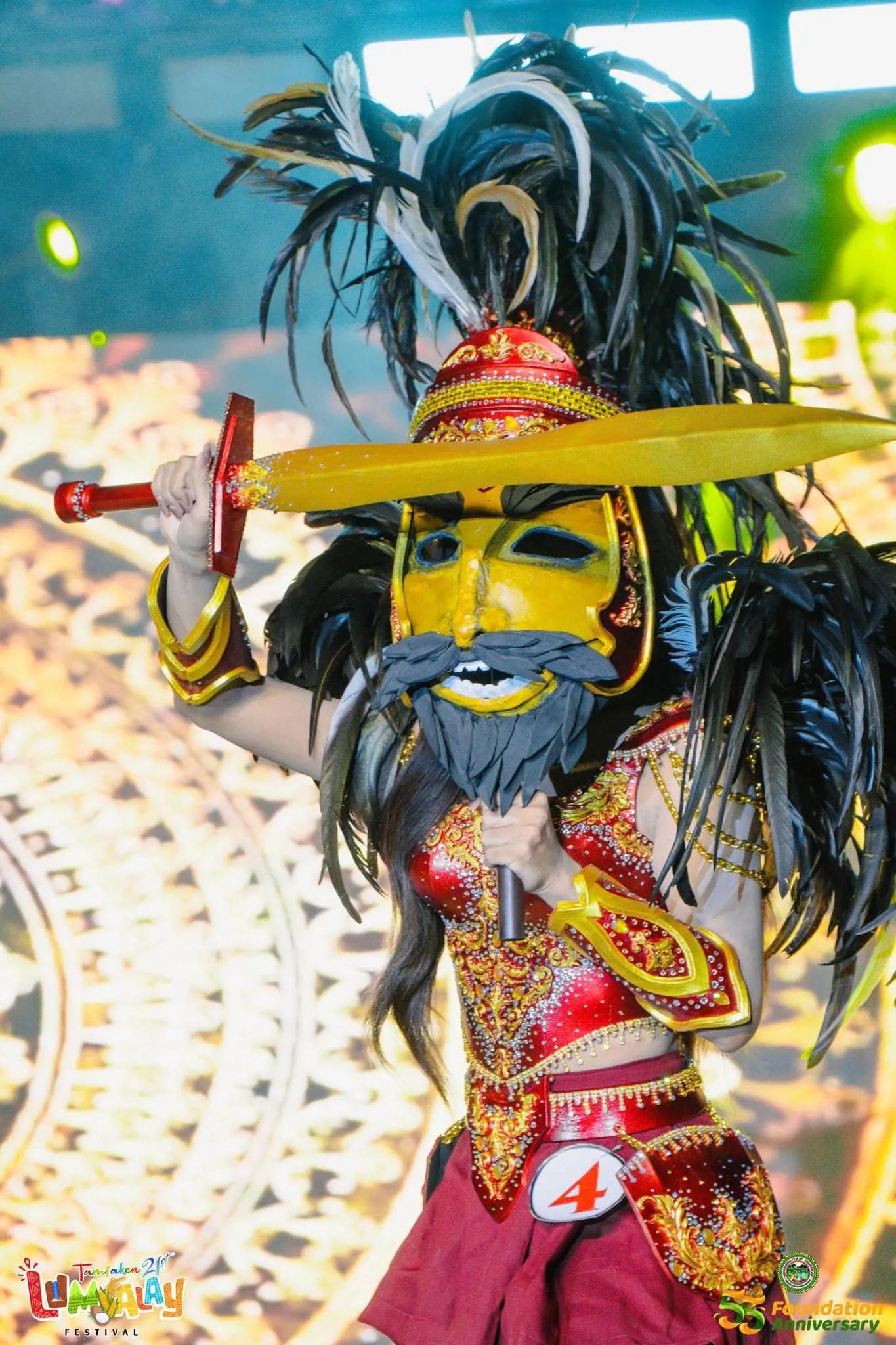
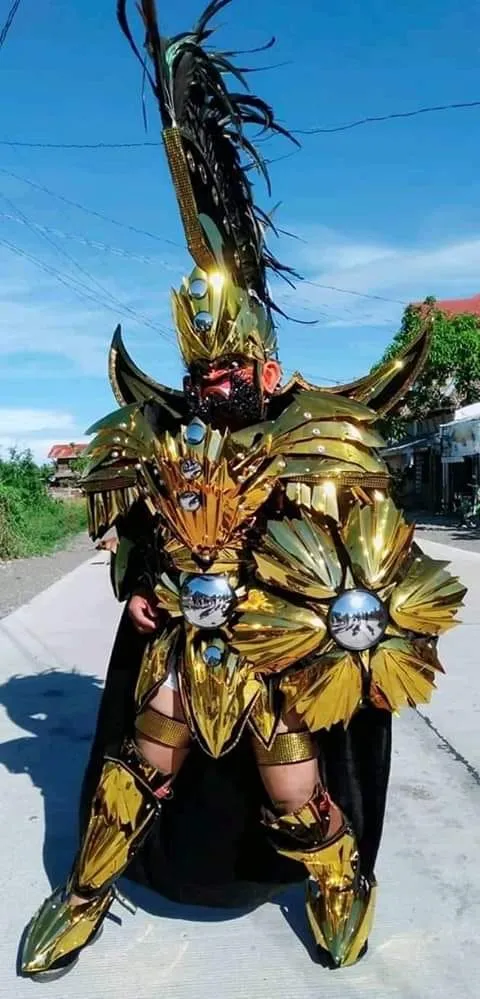
Moriones Festival Date and Schedule 2025
The Ultimate Guide to Moriones Festival 2025 Date
The Moriones Festival 2025 is your ticket to an unforgettable Holy Week experience! This iconic event, held annually in Marinduque, Philippines, is a vibrant blend of faith, culture, and community. If you’re planning to witness the excitement of the Moriones Festival, here’s everything you need to know about its dates and schedule of activities for 2025.
When is the Moriones Festival 2025?
(Note: The dates are verified according to the Christian liturgical calendar for clarity.)
The Moriones Festival coincides with Holy Week, based on the Christian liturgical calendar. In 2025, the festival will take place from April 13 to April 20, featuring religious observances, cultural activities, and colorful parades.
Key Dates During Moriones Festival 2025:
-
Palm Sunday (April 13, 2025): Traditional church services mark the festival’s opening, with costumed “Morions” roaming the streets.
-
Good Friday (April 18, 2025): The highlight of the festival features the dramatic reenactment of the Passion of Christ and the story of Longinus.
-
Easter Sunday (April 20, 2025): The festival concludes with celebrations of Christ’s resurrection and a grand farewell parade of the Morions.
Moriones Festival Schedule of Activities 2025:
This section highlights how the festival schedule offers a rich blend of religious devotion and cultural experiences, ensuring a captivating and immersive experience for attendees.
Mask-Making Workshops
-
When: Daily, from April 13 to April 20, 2025
-
What to Expect: Learn the intricate art of crafting traditional “Morion” masks with local artisans—a perfect cultural souvenir!
Street Parades and Reenactments
-
When: Daily, from April 13 to April 18, 2025
-
What to Expect: Experience vibrant parades with “Morions” in full Roman-inspired costumes and daily reenactments of the Passion of Christ.
Good Friday Main Event (April 18, 2025):
This is the festival’s most dramatic moment, featuring the powerful reenactment of Longinus’ conversion and Christ’s crucifixion.
Cultural Shows and Performances:
-
When: Every evening from April 13 to April 20, 2025
-
What to Expect: Enjoy traditional music, folk dances, and storytelling that showcase Marinduque’s rich cultural heritage.
Religious Activities:
-
When: Daily throughout the festival
-
Where: Churches across Marinduque
-
What to Expect: Participate in Holy Week rituals, processions, and solemn prayers.
Easter Sunday Farewell (April 20, 2025):
The Morions bid farewell with a grand procession celebrating the resurrection of Christ, marking the joyful conclusion of Holy Week.
Why Attend the Moriones Festival 2025?
Past attendees rave about the Moriones Festival for its unique blend of tradition and celebration. One visitor shared, “The passion during the reenactments brought me to tears—it felt like being part of history.” Another noted, “Marinduque’s warmth and the Morions’ dedication made this an unforgettable experience.” Including these personal stories adds authenticity and highlights why this festival is a must-see.
The Moriones Festival offers a rich blend of religious devotion, cultural heritage, and community spirit. Attendees can immerse themselves in centuries-old traditions while enjoying the beauty and hospitality of Marinduque.
Plan Your Visit:
To help you plan your trip, here are some travel tips:
-
Getting There: You can reach Marinduque via flights from Manila to Gasan Airport or by taking a ferry from Lucena City.
-
Where to Stay: Recommended accommodations include beach resorts, local inns, and guesthouses. Popular options are Balar Hotel and Residences and Marinduque Hot Spring Resort.
-
Local Transportation: Jeepneys and tricycles are the primary modes of transportation around the island.
Mark your calendars for April 13 to April 20, 2025, and prepare for a unique cultural experience during this week-long celebration. Whether you are a devout Catholic or a curious traveler, the Moriones Festival 2025 promises unforgettable memories. Make sure to book your accommodations early, as this popular event draws thousands of visitors annually.
Moriones Festival Costume and Masks
If there’s one thing that makes the Moriones Festival instantly recognizable, it’s the stunning costumes and masks. These aren’t just any costumes; they’re intricate, hand-crafted works of art that bring Roman soldiers to life in the heart of the Philippines. Let’s dive into what makes the Moriones Festival costume and masks so iconic and captivating.
The Iconic Look: What’s in a Morion?
The term “Morion” refers to the Roman-inspired helmets worn by participants during the festival. But in the Moriones Festival, these “helmets” are more than just headgear—they’re full-blown masks designed with flair and creativity. Each mask is a colorful masterpiece, often featuring exaggerated facial features, fierce expressions, and vibrant designs. It’s no wonder the Moriones Festival drawing has become a favorite subject for artists and illustrators!
Crafting the Moriones Festival Costume and Masks
Creating the Moriones Festival costume and masks is no small feat. It requires skill, patience, and a whole lot of creativity. Here’s what goes into making these masterpieces:
Materials Used:
- Masks: Traditionally carved from wood, though modern versions often use lightweight materials like papier-mâché or resin for comfort and durability.
- Costumes: Made from locally available fabrics, adorned with metallic accents, sequins, and other embellishments to mimic Roman armor.
- Accessories: Shields, swords, and capes complete the look, adding an extra layer of authenticity to the Roman soldier aesthetic.
The Process:
- Masks are meticulously carved, painted, and polished by skilled artisans.
- Costumes are tailored to fit each performer, ensuring they can move freely during reenactments and parades.
- Each design is unique, with participants often adding personal touches to their masks and costumes.
Moriones Festival Drawing Inspiration
The artistry of the Moriones Festival costume and masks has inspired countless Moriones Festival drawings over the years. From children sketching their favorite “Morion” designs to professional artists capturing the festival’s vibrant energy, the masks have become a beloved subject in Philippine art.
If you’re a fan of creativity, you might even want to try your hand at creating your own Moriones Festival drawing or mask. Who knows? It might just be the perfect souvenir to commemorate your experience.
Why It Matters
The Moriones Festival costume and masks are more than just costumes—they’re a celebration of faith, artistry, and tradition. They symbolize the devotion of the Marinduqueños, the creativity of Filipino culture, and the enduring appeal of this unique festival. Whether you’re marveling at the craftsmanship or participating in the festivities yourself, the costumes and masks are sure to leave a lasting impression.
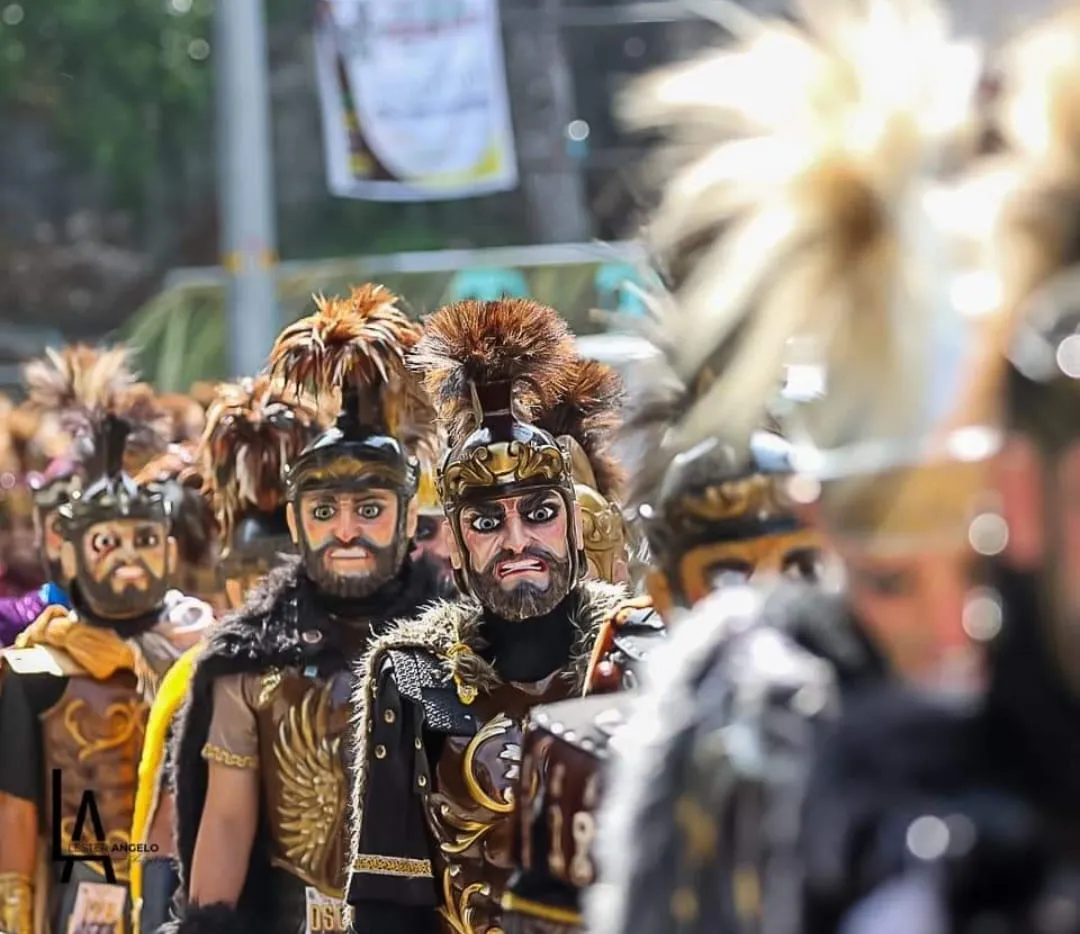
Moriones Festival Activities and Events
The Moriones Festival is a week-long celebration filled with lively traditions, colorful spectacles, and heartfelt devotion. Whether you’re a local or a curious tourist, there’s no shortage of Moriones Festival activities and events to enjoy. From crafting intricate masks to participating in dramatic reenactments, the festival offers something for everyone. Here’s a breakdown of the must-see events and how you can join in on the fun!
1. Mask-Making and Preparation
One of the most exciting parts of the festival is the creation of the famous “Morion” masks. This activity kicks off weeks before the actual celebration as locals pour their creativity into crafting these iconic pieces.
- What Happens: Artisans carve masks from wood or mold them from papier-mâché, painting them with vibrant colors and adding intricate details.
- Why It’s Special: It’s not just about the masks—it’s about the artistry and tradition behind them. Each mask tells a story and reflects the personality of its creator.
- How Tourists Can Participate: Some workshops during the Moriones Festival schedule of activities offer tourists a chance to create their own mini masks. It’s a fun and interactive way to take home a piece of Marinduque’s culture.
2. Street Parades with Participants in Full Costume
The streets of Marinduque come alive with parades featuring “Morions” in their stunning costumes and masks. These parades are among the most anticipated Moriones Festival activities and events.
- What Happens: “Morions” roam the streets, playfully engaging with the crowd, while organized parades showcase synchronized performances by participants in Roman soldier attire.
- Why It’s Special: The parades are a dazzling blend of history, art, and theatrics. They’re perfect for snapping Instagram-worthy photos!
- How Tourists Can Participate: While tourists don’t typically don the full “Morion” attire, you can join the crowd, cheer on the performers, and even interact with the playful “Morions.”
3. Passion of Christ Reenactments
The heart of the Moriones Festival activities and events lies in its reenactments of the Passion of Christ, particularly the story of Longinus, the Roman soldier whose life was transformed by Jesus’ crucifixion.
- What Happens: Actors in costume perform scenes from the Passion of Christ, culminating in the powerful moment when Longinus is healed of his blindness and converts to Christianity.
- Why It’s Special: The performances are both emotional and dramatic, offering a moving retelling of a story central to the Christian faith.
- How Tourists Can Participate: Witness the reenactments from prime spots along the parade routes. Respect the solemnity of the events, as they hold deep religious significance for the locals.
4. Community Prayers and Religious Services
The spiritual essence of the Moriones Festival is reflected in its religious activities, which take place throughout Holy Week.
- What Happens: Daily prayers, church services, and processions are held to commemorate the passion, death, and resurrection of Christ.
- Why It’s Special: These activities provide a quiet contrast to the colorful parades, allowing participants to reflect on the festival’s deeper meaning.
- How Tourists Can Participate: Attend church services or join processions to experience the faith and devotion of the Marinduque community firsthand.
5. Cultural Performances and Shows
Beyond the religious events, the Moriones Festival schedule of activities also includes cultural performances that highlight the rich heritage of Marinduque.
- What Happens: Evening shows feature traditional music, dances, and storytelling, often accompanied by food stalls offering local delicacies.
- Why It’s Special: It’s a celebration of Filipino culture that goes beyond the Roman theme, showcasing the island’s unique identity.
- How Tourists Can Participate: Grab a seat, enjoy the show, and sample some Marinduquean treats while you’re at it!
6. The Grand Farewell Procession
As the festival draws to a close on Easter Sunday, the “Morions” gather for a grand farewell procession.
- What Happens: Participants parade through the streets one last time, celebrating the resurrection of Christ with joyous energy.
- Why It’s Special: It’s a festive send-off that leaves everyone—locals and tourists alike—feeling uplifted and inspired.
- How Tourists Can Participate: Join the procession as an observer or interact with the participants for a memorable finale to your Moriones experience.
Tips for Tourists
- Plan Ahead: Check the Moriones Festival schedule of activities so you don’t miss key events.
- Dress Comfortably: With all the walking and outdoor activities, comfy shoes and breathable clothing are a must.
- Engage Respectfully: While the festival is fun and interactive, remember that it’s also a deeply religious event for the locals.
Whether you’re here to marvel at the artistry, soak in the culture, or deepen your spiritual journey, the Moriones Festival activities and events promise an unforgettable experience. Bring your curiosity, your camera, and your sense of adventure—you’re in for a treat!
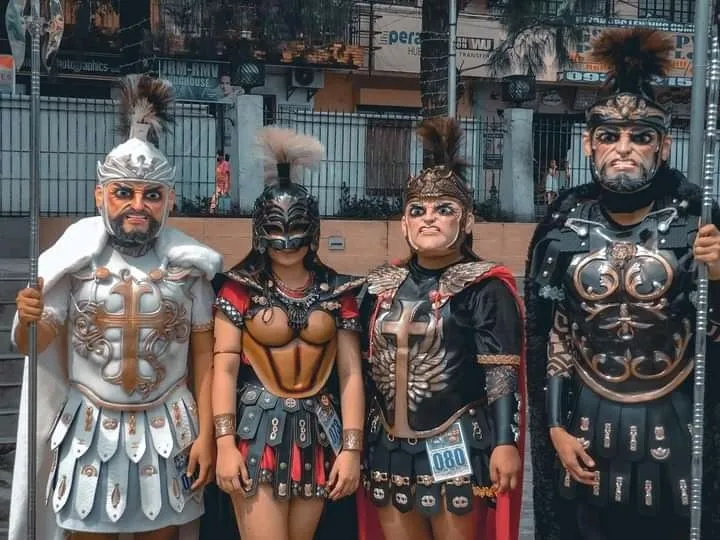
How to Go to Marinduque for the Moriones Festival
Planning to attend the Moriones Festival Marinduque? Getting to this island paradise, famously known as the “Heart of the Philippines,” is easier than you might think. Whether you prefer to fly, take a scenic ferry ride, or combine driving with a sea adventure, this guide will help you navigate your way to the Moriones Festival Philippines with ease. Let’s dive into the travel details, including estimated fares!
Option 1: Fly to Marinduque
Flying is the quickest and most convenient way to reach Marinduque, perfect for those who want to maximize their time at the festival.
Book a Flight:
- Airlines like Cebgo (Cebu Pacific) operate direct flights from Ninoy Aquino International Airport (NAIA) Terminal 4 in Manila to Marinduque Airport in Gasan.
- Flight Duration: Approximately 1 hour.
- Fare: Round-trip tickets typically range from ₱2,500–₱5,000, depending on how early you book and the demand during Holy Week.
Local Transport Upon Arrival:
- From the airport, you can take a tricycle or van to your destination. Tricycle fares range from ₱50–₱150, while vans charge around ₱200–₱300 for longer rides.
Pro Tip: Book your flights early since Holy Week is peak travel season, and seats fill up fast during the Moriones Festival schedule of activities.
Option 2: Ferry from Manila via Lucena Port
Taking a ferry is a popular choice for those who enjoy a more leisurely travel experience.
Travel to Lucena Port:
- Take a bus from Manila to Lucena City, which serves as the gateway to Marinduque.
- Bus companies like JAC Liner and DLTB Co. operate regular trips from major terminals in Cubao and Buendia.
- Travel Time: 3–4 hours.
- Fare: Around ₱250–₱300.
Ferry to Marinduque:
- From Lucena Port, board a ferry operated by Montenegro Lines or Starhorse Shipping to one of Marinduque’s main ports: Balanacan, Cawit, or Mogpog.
- Travel Time: 3–4 hours.
- Fare:
- Economy class: ₱260–₱300.
- Tourist class: ₱300–₱350.
Getting Around Marinduque:
- Upon arrival, you can hire a tricycle (₱50–₱150) or take a jeepney or van (₱100–₱250) to reach your accommodation or festival venues.
Pro Tip: Check ferry schedules in advance and arrive at the port early to secure your tickets. Peak season means ferries can get crowded quickly!
Option 3: Drive and Ferry Combo
If you’re traveling with a group or prefer the comfort of your own vehicle, the drive-and-ferry combo is a great option.
Drive to Lucena Port:
- Use the South Luzon Expressway (SLEX) and follow signs to Lucena City.
- Travel Time: 3–4 hours from Manila.
- Fuel Costs: Approximately ₱1,000–₱1,500, depending on your vehicle’s fuel efficiency.
Take a RoRo Ferry:
- Both Montenegro Lines and Starhorse Shipping offer roll-on/roll-off (RoRo) services for vehicles.
- Fare:
- Motorcycle: ₱500–₱700.
- Car/SUV: ₱1,200–₱2,000, depending on the vehicle size.
- Passenger Fee: Additional ₱260–₱350 per person.
Drive Around Marinduque:
- Having your own vehicle allows you to explore the island at your own pace, making it easy to visit the different Moriones Festival activities and events.
Popular Travel Routes
Depending on where you’re coming from, here are the most common travel routes:
- From Manila: Bus to Lucena + Ferry to Marinduque (budget-friendly option).
- From Batangas or Cavite: Drive to Lucena + RoRo ferry.
- From Cebu or Mindoro: Fly to Manila, then follow one of the above routes.
Estimated Total Costs
Here’s a rough breakdown of travel costs for a round-trip journey from Manila:
- Flying: ₱3,500–₱6,500 (flight + tricycle/van).
- Ferry Route: ₱1,000–₱1,500 (bus + ferry + local transport).
- Drive + Ferry: ₱2,500–₱4,000 (fuel + RoRo + fees).
Local Transportation in Marinduque
Once in Marinduque, getting around is easy:
- Tricycles: Perfect for short rides (₱50–₱150).
- Jeepneys and Vans: Ideal for traveling between towns (₱100–₱250).
- Motorbike Rentals: Available for ₱500–₱700/day for more adventurous travelers.
Travel Tips for the Moriones Festival Philippines
- Book Early: Reserve your ferry tickets, RoRo slots, or flights as soon as possible to avoid last-minute hassles.
- Pack Light: Stick to essentials to make traveling smoother, especially if you’re taking public transport.
- Be Punctual: Holy Week schedules can be unpredictable, so plan extra time for delays.
- Immerse Yourself: Once in Marinduque, fully engage with the Moriones Festival schedule of activities for the best experience!
Getting to Marinduque for the Moriones Festival Marinduque may take a bit of planning, but the vibrant festivities, rich traditions, and warm hospitality make it all worthwhile. So, whether you fly, ferry, or drive, start planning your journey to one of the most celebrated cultural events in the Moriones Festival Philippines today!
Best Places to Stay During Moriones Festival
Finding the perfect place to stay during the Moriones Festival Marinduque can make your experience even more enjoyable. With the island bustling with excitement and visitors during Holy Week, accommodations fill up fast. Whether you’re looking for a cozy guesthouse, a budget-friendly spot, or a more luxurious hotel, here’s a guide to the best places to stay during Moriones Festival, complete with tips to secure your booking.
1. Hotels Near Key Festival Locations
Staying near the festival’s major venues allows you to immerse yourself fully in the action. Here are some popular options:
Boac Hotel
- Location: Boac, the provincial capital. LINK
- Why Stay Here: Centrally located, this hotel is just a stone’s throw away from the parades, reenactments, and cultural shows.
- Rates: ₱1,500–₱2,500 per night.
- Ideal For: Those who want to be in the heart of the Moriones Festival Marinduque activities.
Hotel Zenturia
- Location: Boac. Hotel Zenturia Facebook Page
- Why Stay Here: Comfortable and modern rooms with easy access to local restaurants and shops.
- Rates: ₱2,000–₱3,500 per night.
- Ideal For: Couples and small groups looking for a convenient and relaxing stay.
Tahanan sa Isok
- Location: Boac. Website Link
- Why Stay Here: A charming boutique hotel offering personalized service and proximity to festival sites.
- Rates: ₱1,800–₱3,000 per night.
- Ideal For: Families who value comfort and convenience.
2. Budget-Friendly Guesthouses and Inns
Travelers on a budget can find plenty of wallet-friendly options without sacrificing comfort. These guesthouses and inns are ideal for immersing in local culture:
Casa de Marinduque
- Location: Gasan.
- Why Stay Here: A cozy guesthouse with clean rooms and warm hospitality, located near the airport.
- Rates: ₱800–₱1,500 per night.
- Ideal For: Solo travelers and backpackers.
Happy Bunny Guesthouse
- Location: Mogpog.
- Why Stay Here: Affordable rates with basic amenities and friendly hosts.
- Rates: ₱1,000–₱1,500 per night.
- Ideal For: Budget-conscious travelers who want a homey vibe.
Eastpoint Hotel by the Sea
- Location: Sta. Cruz.
- Why Stay Here: An affordable option with scenic coastal views and easy access to nearby attractions.
- Rates: ₱1,200–₱2,000 per night.
- Ideal For: Groups and families looking for a budget-friendly stay.
3. Beach Resorts for a Relaxing Escape
If you want to enjoy the festival while soaking in Marinduque’s natural beauty, consider staying at one of its beach resorts.
Balar Hotel and Spa
- Location: Gasan.
- Why Stay Here: Offers luxurious amenities and stunning beach views. It’s a short drive from key festival venues.
- Rates: ₱3,000–₱5,000 per night.
- Ideal For: Couples or travelers seeking a mix of relaxation and cultural immersion.
Marinduque Hot Spring Resort
- Location: Buenavista.
- Why Stay Here: Combines hot springs and a tranquil beach setting, perfect for unwinding after a day at the festival.
- Rates: ₱2,000–₱4,000 per night.
- Ideal For: Travelers who want a relaxing retreat.
Beach Club Cagpo
- Location: Torrijos.
- Why Stay Here: Quiet and serene, it’s a bit farther from the main festival but offers a peaceful seaside escape.
- Rates: ₱1,500–₱3,000 per night.
- Ideal For: Tourists who want a mix of festival fun and solitude.
4. Tips for Booking Accommodations
Holy Week is the busiest time in Marinduque, so here are some tips to ensure you snag a great place to stay:
- Book Early: Rooms sell out fast during the Moriones Festival Marinduque, so secure your accommodation at least 2–3 months in advance.
- Look for Packages: Some hotels and guesthouses offer special packages that include festival tours or transportation.
- Check Reviews: Always read recent reviews to ensure the place meets your expectations.
- Consider Proximity: Staying in Boac, Mogpog, or Gasan puts you closer to most Moriones Festival schedule of activities.
Estimated Accommodation Costs
- Budget-Friendly Options: ₱800–₱1,500 per night.
- Mid-Range Hotels: ₱1,800–₱3,500 per night.
- High-End Resorts: ₱3,000–₱5,000+ per night.
Why Staying in Marinduque is a Treat
Wherever you stay, you’ll find the people of Marinduque to be incredibly welcoming. Accommodations range from quaint inns to luxurious resorts, catering to every type of traveler. Plus, being close to the action means you can easily immerse yourself in the rich traditions of the Moriones Festival Philippines.
Frequently Asked Questions
Here are the most commonly asked questions about the Moriones Festival Marinduque to help you plan your trip for the Moriones Festival 2025. From understanding its essence to practical tips, we’ve got you covered.
What is Moriones Festival?
The Moriones Festival is a vibrant cultural and religious event celebrated annually in Marinduque during Holy Week. It features participants dressed as Roman soldiers, known as “Morions,” reenacting the story of Longinus, a Roman centurion who played a role in the Passion of Christ. It’s a unique blend of artistry, faith, and tradition.
When is the Moriones Festival Date in 2025?
The Moriones Festival 2025 will take place from March 30 (Palm Sunday) to April 5 (Easter Sunday). Good Friday, April 4, will be the highlight of the festivities, featuring dramatic reenactments of the Passion of Christ.
What Activities Can Tourists Join During the Festival?
Tourists are welcome to immerse themselves in various Moriones Festival activities and events, including:
- Mask-making workshops where you can craft your own Morion mask.
- Street parades and performances to witness the vibrant costumes and lively interactions.
- Passion of Christ reenactments, which bring history and faith to life.
- Cultural shows and food stalls showcasing Marinduque’s rich heritage.
How to Get to Marinduque for the Moriones Festival?
Reaching Marinduque is easy with multiple options:
- Fly: Direct flights from Manila to Marinduque Airport (₱2,500–₱5,000 round trip).
- Ferry: Bus to Lucena Port + ferry to Marinduque (₱1,000–₱1,500 total).
- Drive and Ferry: Bring your own vehicle via RoRo ferries (₱2,500–₱4,000 total).
Where to Stay in Marinduque During the Festival?
There’s no shortage of accommodations, from budget-friendly guesthouses to luxurious beach resorts:
- Hotels in Boac, like Boac Hotel, put you close to the action.
- Budget inns, such as Happy Bunny Guesthouse in Mogpog, offer affordable stays.
- Beach resorts, like Balar Hotel and Spa, provide a relaxing retreat.
Conclusion
The Moriones Festival isn’t just an event; it’s a celebration of culture, faith, and artistry that’s deeply rooted in the history of Marinduque. From the dramatic reenactments of the Passion of Christ to the vibrant street parades featuring iconic Morion masks, every aspect of the festival tells a story that resonates with visitors from all walks of life.
As you plan your trip to the Moriones Festival 2025, you’re not just preparing for a journey to Marinduque—you’re embarking on an unforgettable cultural adventure. Whether you’re crafting your own mask, watching the reenactments, or exploring the island’s scenic beauty, this festival promises an experience like no other.
So, what are you waiting for? Plan your visit to the Moriones Festival 2025 today and be part of a celebration that blends tradition, creativity, and faith in the most spectacular way. See you in Marinduque!


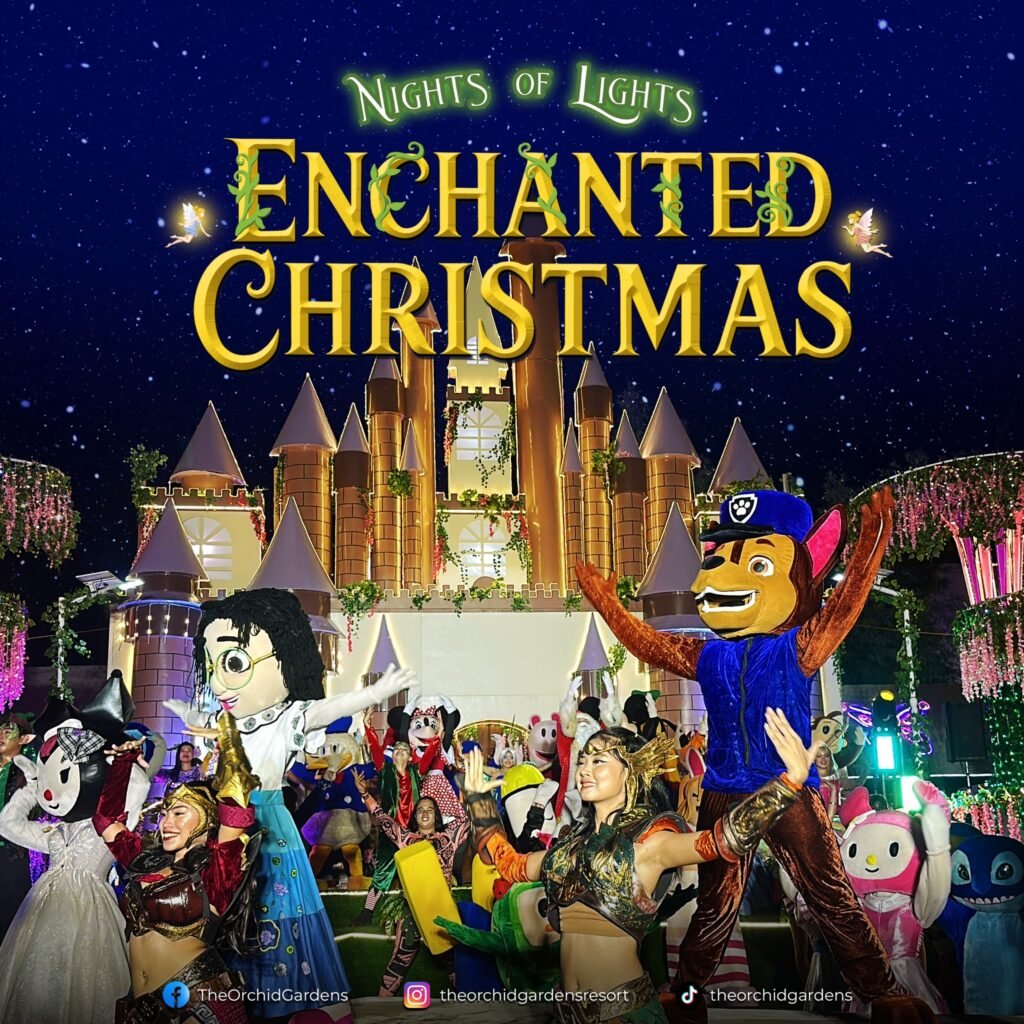
Hello, I enjoyef reading your article and I find it very informative. I think your Holy Week date is off… You wrote:
When is the Moriones Festival Date in 2025?
The Moriones Festival 2025 will take place from March 30 (Palm Sunday) to April 5 (Easter Sunday). Good Friday, April 4….
Hello Raul,
Moriones Festival is always held in holy week, which is april 13 to 20. Thank you!